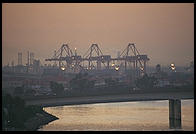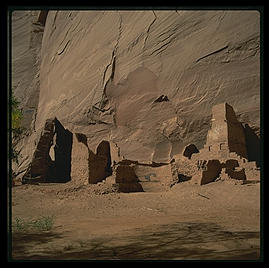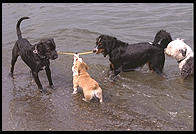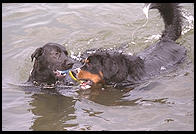
Storing Slides, Negatives, and Photo
by Philip Greenspun; revised August 2018
Site Home : Photography : Storing Slides, Negatives, and Photos

by Philip Greenspun; revised August 2018
Site Home : Photography : Storing Slides, Negatives, and Photos
There are two important issues in slide/neg storage: (1) keeping your slides
from fading; (2) ease of retrieval.
Staving Off Fading
 Before you embark on a storage
project, you ought to read
The Permanence
and Care of Color Photographs. Briefly, slides and negatives will fade. They
will fade faster if they are hot and/or humid. They will fade faster if they are
interacting with any chemicals.
Before you embark on a storage
project, you ought to read
The Permanence
and Care of Color Photographs. Briefly, slides and negatives will fade. They
will fade faster if they are hot and/or humid. They will fade faster if they are
interacting with any chemicals.
You want your images to be in a room that is air-conditioned in the summer.
You want them to be surrounded by polyethylene or polypropylene or acid-free
paper. You want everything encased in a steel cabinet or acid-free paper box.
Facilitating Retrieval
I love lateral files and hanging folders. I even
drove to
Alaska with four plastic crates of hanging folders in my minivan. The best
filing cabinets are made by Steelcase. You can special order them in non-ugly
colors, e.g., really white white. They are expensive but last forever and roll
beautifully. Wood filing cabinets might look better but the chemicals in the wood
and glue will eat your images.
 I use the special 42" wide Steelcase
laterals that can be used to front-to-back file three rows of "letter sized"
hanging folders. Regular Pendaflex folders are made of a nasty green-looking
cardboard that I presume contains plenty of acid. Archivists use the plastic
Pendaflex "Ironhide" folders which are available at full-line office supply
houses. These are manufactured for standard office use because they are more
durable than cardboard folders but as it happens they are made with a reasonably
good plastic for image storage.
I use the special 42" wide Steelcase
laterals that can be used to front-to-back file three rows of "letter sized"
hanging folders. Regular Pendaflex folders are made of a nasty green-looking
cardboard that I presume contains plenty of acid. Archivists use the plastic
Pendaflex "Ironhide" folders which are available at full-line office supply
houses. These are manufactured for standard office use because they are more
durable than cardboard folders but as it happens they are made with a reasonably
good plastic for image storage.
My basic filing system is chronological. If I make dupes of images, I put them in a separate folder next to the originals.
 I put all of
my slides into archival plastic slide-saver pages, 20 to a page. This is key because I can lay down a page on a light table and scan
it quickly to find the slide requested by a magazine or whatever. As I stuff the
slides in, I use a Sharpie pen to mark the plastic with names of people and
places. If the roll is unrelated to any others, I stick a plastic hanging spine
through the back of the page and just hang it in the cabinet. If there are 10
rolls of the same subject, which implies 20 pages, then I dump them all into a
plastic Pendaflex folder.
I put all of
my slides into archival plastic slide-saver pages, 20 to a page. This is key because I can lay down a page on a light table and scan
it quickly to find the slide requested by a magazine or whatever. As I stuff the
slides in, I use a Sharpie pen to mark the plastic with names of people and
places. If the roll is unrelated to any others, I stick a plastic hanging spine
through the back of the page and just hang it in the cabinet. If there are 10
rolls of the same subject, which implies 20 pages, then I dump them all into a
plastic Pendaflex folder.
I leave 35mm negs and proof prints in the packaging used by the photo lab. I aggregate them into hanging folders by subject. If I have an orphan roll or two then I put them into a folder labelled "October 1996".
If I have an extra 8x10 print, I file it along with my slides and negs. I file
larger prints in archival cardboard boxes. However, the correct way to file large prints is in a steel
architect's "flat file".
Photo Albums
My favorite way to make physical albums is to use
loose leaf binders and achival paper from Light Impressions. They make a
huge notebook and page set that can comfortably accommodate four 4x6" proofs on
one page. I use a 3M Adhesive Transfer Gun to stick the photos to the pages. This
system is permanent and therefore not loved by achivists but it is chemically
inert so it won't eat your pictures. There are some newer systems that are
repositionable that I'd like to try but haven't. Light Impressions sells moby
plastic sheets to wrap around these album pages but I don't like them. I want a
clear view of my photos with no intervening plastic. If you decide to go
plastic-free, you may have to kick people who put their grubby paws directly on
the prints, though.
I don't use interleaving sheets to separate the photos on opposite pages but I
guess I probably should. I live in Massachusetts where it gets moderately humid
in the summer but after about five years haven't had any problems with photos
sticking to each other.
Slide Shows
If you want to do a slide show, it is best to make dupes of all the slides and
leave the originals in the plastic pages. A Kodachrome will fade after one hour
of projection; a typical E6-process slide will fade after two or three hours of
projection. There is nothing wrong with leaving originals in slide trays, but it
makes retrieval of specific images tough. Be certain to label the outside of the
boxes in which you keep the slide trays. Otherwise, you'll be searching for hours
to find a particular slide. Also, stamp your name, address, and phone number
everywhere you can. There is nothing more depressing than
losing a Carousel full of originals.
Mailing Prints
For envelopes and packaging materials to mail photographic prints, contact
American Printing and Envelope Company (APEC) at 45-12 Davis Street, Long Island
City, NY 11101, (800) 221-9403.
OK, that's all that I have to say. The next section is authored by a
professional stock photographer...
Richard Shiell's "How to Organize Picture
Files"
As a stock photographer with about 50,000 slides I've been forced to learn to
organize picture files.
First you'll need to store your pictures safely. Choose either archival (non-acid) boxes or polypropylene (not vinyl) ring binder pages. Non-archival paper boxes leak acidic vapors, and vinyl pages leak volatile softening agents that can make the film emulsion stick to the page.
Ring binder pages can be stored either in binders or in hanging files. Ordinary hanging files hold about ten pages each.
Each picture should have a unique serial number. This is important for identification whenever a picture is sent out. The easy method is for the first picture to be numbered 1, the thousandth picture to be numbered 1000, etc. A useful alternative for those who shoot several identical frames (in-camera dupes) is a double serial number; in-camera dupes share the same serial number, and have individual second numbers (say, 1000-1, 1000-2, 1000-3, etc.)
There are two methods for organizing picture files, either by subect or by serial number. Each has it's own advantages. Whichever you use it's a good idea to keep separate files for prints and slides.
Subject files are preferred by stock agencies and most stock photographers. It works like a library or book store; general sections divided by subject or location. For example, a picture with the caption "Boulder with Map Lichens in Autumn Field, William O'Brian State Park, Minnesota, USA." would be found in the William O' Brian State Park file among the Minnesota files of the picture library. Or an Iceland Poppy would be found under P (for Papaver nudicaule, the Latin name) within the Annual and Perennial Plants section of the Plants files.
A sampler of subject file headings:
As the picture library grows the subject files get divided into more and more precise categories according to the number of pictures of each subject. Fifty pictures of roses could be lumped together in a comprehensive "rose" file, but 1000 pictures of roses would need to be subdivided (either alphabetically or possibly into groups like Miniatures, Hybrid Teas, Species Roses, Floribundas, Climbers, Shrub Roses, Antique Roses, etc.).
Generally flora and fauna pictures submitted for publication need to be labelled with Latin name and common name (and location, serial number, and photographer's name). Flora files are typically alphabetized by Latin names, wheras for fauna either Latin or common names are useful. Lettered files can be grouped (A-D, E-F, etc.), or each letter can have it's own page or divider. The pictures within each lettered page or box need not be alphabetized (all the A's can be lumped together), but any subject for which there are over a dozen pictures (Iris, Felis, or whatever) should have it's own page or divider. A subject file kept in binder pages should have each page labelled.
The basic guideline for a subject file is (in the words of Marv Dembinsky, a stock agent) "make the files fit the way clients request pictures". If you get a lot of requests for baby animals then you should have a baby animals file.
Characteristics of subject files:
Setting up files organized by serial number is easy; slide number 1 is in the first position, and number 1000 is in the thousandth position.
Finding pictures in a serial number file requires a cross-referenced database, like the card catalog at the library (I'd recommend using a computer). If you want to find a picture of a boulder in a meadow do a keyword search for "boulder" and "meadow". Many ready-to-use database software packages are available, and even a text editor with multiple keyword searching will suffice. (I use Kedit, a text editor with a macro programming language).
Characteristics of serial number files:
Database searching can be expedited by using subject codes. I use a two-letter code, and incorporate it into the serial number, i.e. 1000-EG-3. Sometimes two codes are necessary; 1001-HK(CK)-3 would depict two subjects, maybe a Monarch butterfly on a Purple Coneflower. The first letter covers 26 broad categories (choose your own. Mine are tailored to the subjects I shoot). The second letter subdivides each category. You could use three or four letters. Say you have a code for shorebirds. A database search for that code and, say, "Oregon", would return all your Oregonian shorebirds. If you use subject files the code indicates where to file the picture.
No matter how a picture library is organized it's important to find the time
to file pictures as they return from clients or from processing. If several
months go by and hundreds of pictures haven't been put away, well, it's an
invitation to misplaced pictures or lost sales.
More
| [ top ] |